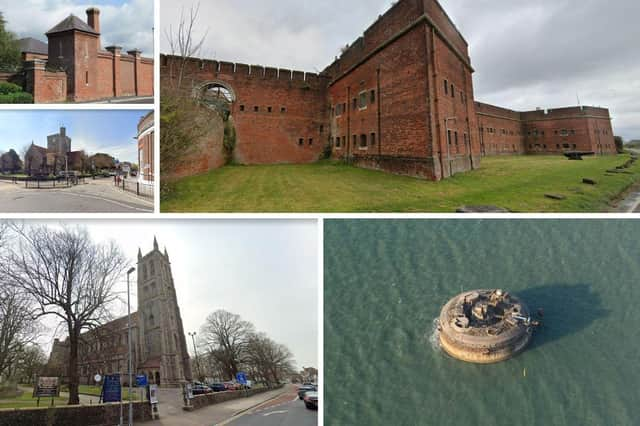The most recent ‘at risk’ register lists 25 local buildings from across the Portsmouth area including brickworks, military buildings and boatyard buildings and outlines the action needed to preserve these historical gems. The public body said the programme shines a light on historic sites most in need and has brought local people together in caring for and enjoying their heritage.
Work has been ongoing to preserve and preserve some of the buildings on the list including Fort Purbrook where a programme of refurbishment work is underway, at Gilkicker Fort in Gosport which is in the process of being transformed into new homes and at No 2 Battery in Gosport where The Diving Museum has drawn up plans for improvements.
Historic England said around 6,800 historic sites have been rescued over the past 25 years – equivalent to around three-quarters of the entries on the original register from 1998 and that being on the ‘at risk’ register can help to attract much-needed funding or assistance to take action.
Chief executive Duncan Wilson added: “Protecting our heritage is so important. The Heritage at Risk programme shines a light on our historic sites most in need and can help to attract funding and help. After a quarter of a century of the Heritage at Risk Register, we are celebrating how many places have been saved and continue to find new ways to involve local people in caring for and enjoying their heritage.”
His sentiments were shared by Liz Fuller, buildings at risk officer at SAVE Britain's Heritage. She said: “It is vitally important to monitor and find new uses for historic buildings which are being neglected as they can deteriorate in condition very quickly. The worse the condition of the building, the more expensive it will be to bring them back into use. Our historic buildings are a national resource and bring character and interest to our streets.”
The full ‘at risk’ register can be found on Historic England’s website. Of all the buildings and sites on the register, 789 were assessed to be in a very bad condition, while the most – 1,707 were in a poor condition. Of these, no solution was agreed for 549 in a ‘immediate risk of further rapid deterioration or loss of fabric’. There was also no solution agreed for 1,019 sites suffering from ‘slow decay’.
The ones in our area are:
Historic England said around 6,800 historic sites have been rescued over the past 25 years – equivalent to around three-quarters of the entries on the original register from 1998 and that being on the ‘at risk’ register can help to attract much-needed funding or assistance to take action.
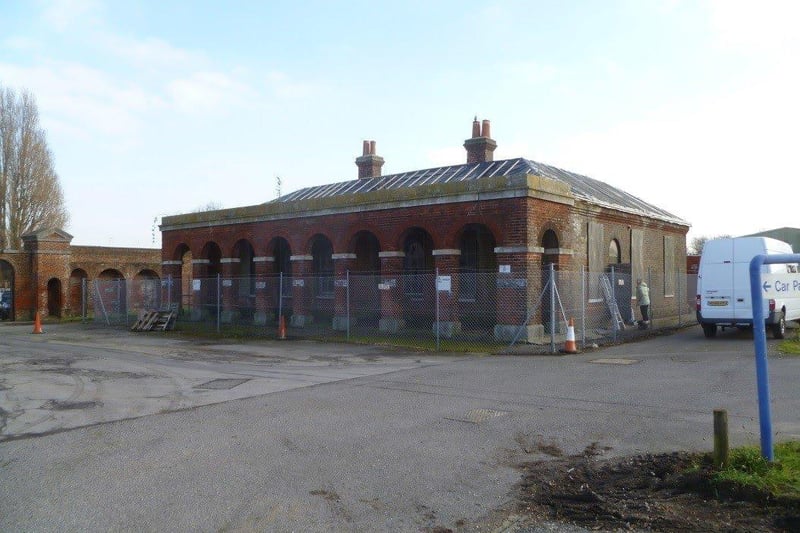
17. Former Guard House, Haslar Gunboat Yard, Haslar
The Former Guard House to Gunboat Yard was constructed in mid-19th century, mainly built of red brick with limestone dressings beneath hipped slate roof. Vacant and at risk due to poor condition of roofs, rainwater disposal, leaning chimney stack, windows, doors, floors and internal finishes. Historic England grant aided a Conservation Management Plan and Feasibility Study. New uses are being explored. Photo: Historic England
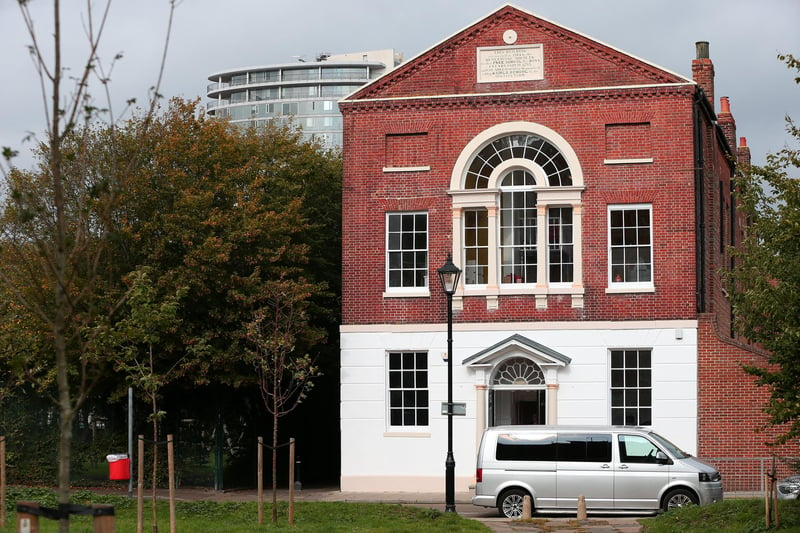
18. The Beneficial School (Groundlings Theatre), Kent Street, Portmouth
The Beneficial School of 1784 and 1836 is now in use as a venue by the Groundlings Theatre Trust. An updated condition survey has been completed which has identified problems including with the roof structure and windows. Some repairs to the front elevation have been successfully completed. Historic England, Theatres Trust, National Lottery Heritage Fund and Architectural Heritage Fund continue to offer guidance to the tenant and owner to secure repairs, maintenance and management of the building. Photo: Chris Moorhouse
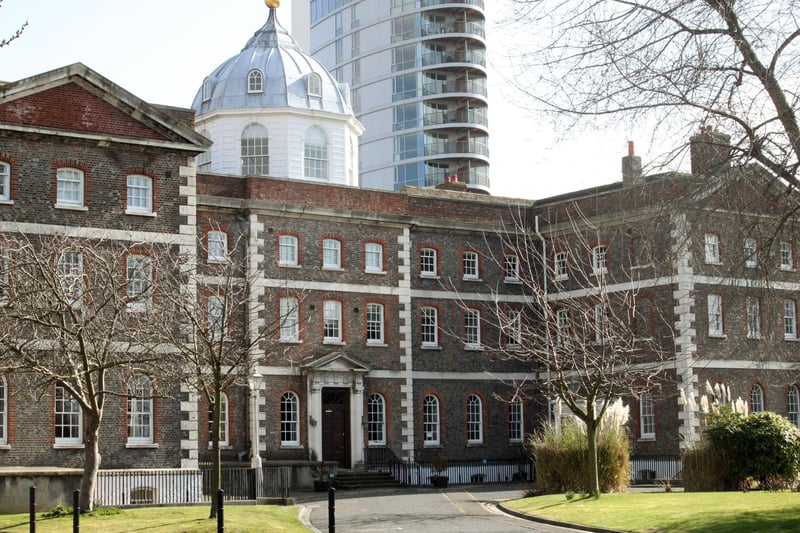
19. Former Royal Naval Academy, HM Naval Base, Portsmouth
One of the oldest structures in the Dockyard, this building is a Georgian forerunner of the Britannia Royal Naval College at Dartmouth. This building has long been vacant. Natural ventilation and background heating has been introduced and furnishings removed, reducing damp levels. Remedial works to roof coverings and parapet gutters have reduced water ingress and the dry rot appears to be dying back. The cupola has been repainted. Asbestos has been found in the roof and must be removed before full surveys can be undertaken, Historic England has said. Photo: -
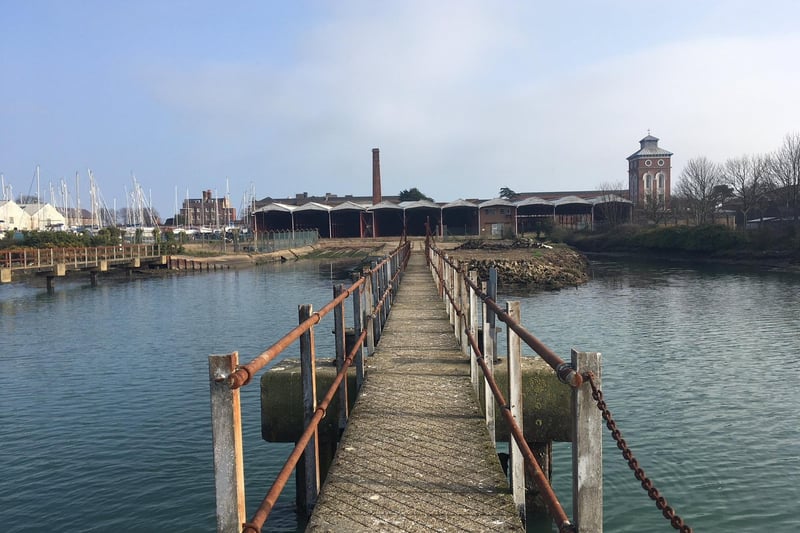
20. Gunboat Sheds and Workshops, Haslar Gunboat Yard
A row of ten gunboat sheds and three maintenance workshops, designed in 1856 by William Scamp of the Admiralty Works Department as part of the Haslar Gunboat Yard for the housing and repair of British gunboats, and their successor craft, of the Royal Navy. The adjacent traverser system was used for their launch and movement. The site ceased to be used in the mid-1970s but remained in MOD ownership. Once vacant, its condition deteriorated, with only minimum maintenance undertaken. Historic England grant aided a feasibility study in 2019 to help find an appropriate new use for the site. Photo: Historic England
